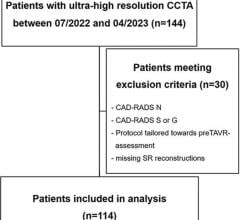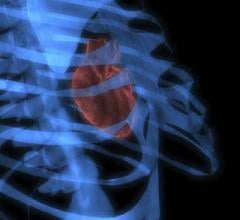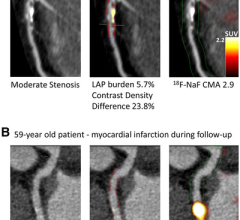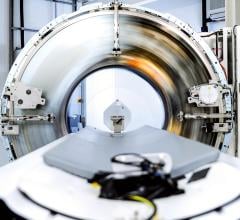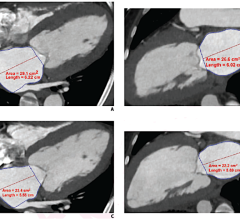July 25, 2007 – Using 64-slice coronary CT angiography as a diagnostic test poses a substantial risk of developing radiation-induced cancer for women and younger patients, according to a study published in the Journal of the American Medical Association earlier this month.
The researcher team, led by Dr. Andrew Einstein, Ph.D., assistant professor of clinical medicine at Columbia University College of Physicians and Surgeons in New York City, estimated the age-specific lifetime attributable cancer risk (LAR) based on age, sex and scan protocol, and found "rather than a relatively constant risk of cancer in 1 person per 1000 to 2000 exposed, the LAR ranged from less than 0.02% to nearly 1%" (JAMA, July 18, 2007, Vol. 293:3, pp. 317-323).
Standard spiral CT protocols, including electrocardiographically controlled tube current modulation (ECTCM), were performed on standardized male and female anthropomorphic mathematical phantoms coupled with the application of Monte Carlo simulations to estimate statistical distribution of dose, and organ doses ranged from 42-91 mSv for the lungs and 50-80 mSv for the female breast.
Results from the study found that lifetime cancer risk estimates for standard cardiac scans came in at 1 in 143 for a 20-year-old woman to 1 in 3,261 for an 80-year-old male. A combined CT scan of the heart and aorta posted higher LARs, up to 1 in 114 for a 20-year-old woman. The estimated cancer risk using ECTCM was 1 in 715 for a 60-year-old woman and 1 in 1,911 for a 60-year-old man. By using ECTCM, the risk estimate for a 20-year-old female decreased to 1 in 219 and to 1 in 5,017 for a 20-year-old male.
Researchers concluded that "risks were particularly high for women in their 20s and decreased markedly as a function of age,” and “the leading cause of cancer in women from a (coronary CTA) scan was breast cancer until 32 years of age, after which lung cancer risk exceeded that of breast cancer."
For more information: jama.ama-assn.org/


 November 13, 2025
November 13, 2025 


